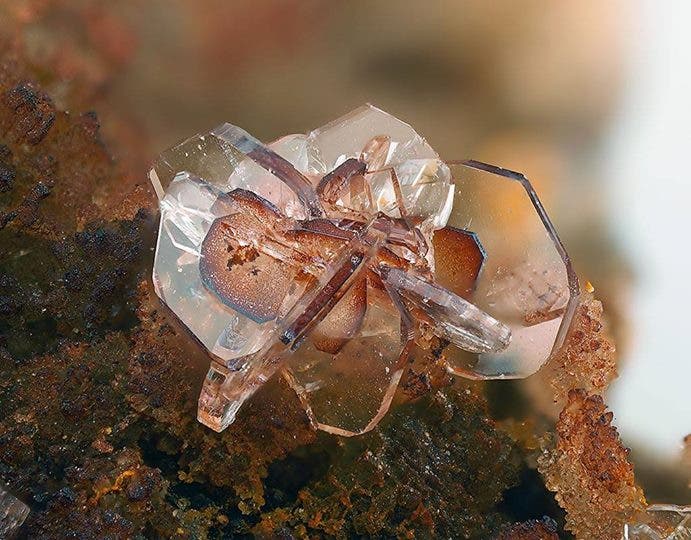
Locality: Clara Mine, Black Forest, Baden-Württemberg, Germany
*Photo : © Edgar Müller
What we’re looking at here is a picture of baryte. Baryte is a mineral consisting of barium sulfate. The mineral itself is generally colorless, and it is used industrially to extract barium.
Baryte occurs in a large number of depositional environments, and is deposited through a large number of processes including biogenic, hydrothermal, and evaporation, among others. It usually occurs in lead-zinc veins in limestones, in hot spring deposits, and with hematite ore. It is often associated with the minerals anglesite and celestine and was also often found in meteorites.
However, its most common industrial use is in the oil industry. Some 77% worldwide is used as a weighting agent for drilling fluids in oil and gas exploration to suppress high formation pressures and prevent blowouts. As a well is drilled, it passes through different formations with different characteristics. The deeper the hole, the more barite is needed as a percentage of the total mud mix. An additional benefit of barite is that it is non-magnetic and thus does not interfere with magnetic measurements taken in the borehole, either during logging-while-drilling or in separate drill hole logging. Barite used for drilling petroleum wells can be black, blue, brown or gray depending on the ore body. The mineral is also used as a filler material in paints.






